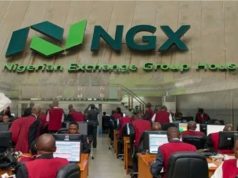…Several African countries have reported a rise in their GDP despite fears over increased debt according to ICAEW’s (the Institute of Chartered Accountants in England and Wales) latest report. In Economic Insight: Africa Q2 2018 launched today, the accountancy body provides GDP growth forecasts for various regions including East Africa which is set to grow by 6.1%, Southern Africa by 2.3%, Central and West Africa at 3.6% and Franc Zone at 4.5%.
WED, JUNE 20 2018-theG&BJournal-The report, commissioned by ICAEW and produced by partner and forecaster Oxford Economics, provides a snapshot of the region’s economic performance. The regions include: East Africa, Southern Africa, Central and West Africa and Franc Zone.
According to the report; East Africa’s GDP growth is mainly thanks to Ethiopia whose real GDP growth of 8.1%, is forecast to result from continued public investment. The same kind of capital spending in Egypt, made possible by compliance with reforms proposed by the International Monetary Fund (IMF), will boost growth to 5.0%, making this the key driver behind the 3.9% growth in North Africa’s GDP this year.
In Central and West Africa, growth is forecast to increase substantially to 3.6%, up from 2.3% in 2017. The standout economy in that region will be Ghana, where real GDP growth of 7.2% in 2018 is forecast to come partly from increased public investment, and the resulting boost to the construction and manufacturing sectors.
Michael Armstrong, Regional Director, ICAEW Middle East, Africa and South Asia said: “In spite of debt fears, most African regions have reported positive economic growth – mainly spearheaded by public investment and hydrocarbon resources. However, governments need to sustain this positive momentum while balancing their public debt.”
The picture in the Franc Zone is slightly more positive than in 2017, with regional GDP growth forecast at 4.5%. Most of the regions’ growth however, will be provided by the two economies that are not oil dependent. These are Ivory Coast (7.0% growth) and Senegal (6.7%), where continued government spending on infrastructure and ongoing improvements to the business environment are key drivers.
Southern Africa’s growth will remain constrained by modest growth in South Africa. The region’s GDP is forecast to grow 2.3% in 2018, the slowest regional growth rate on the continent.
The report also highlights the debt financed capital spending by governments. It argues that the fears of over indebtedness in Africa are largely overblown. The growth recovery that started in 2017 will support a decline in the real debt burden over the medium term, meaning that the debt burden will tend to become more sustainable over time.
At the same time, the profile of public debt is changing as tailored fittings replace off-the-rack offerings, allowing governments to take on external debt on more favourable conditions than before.
The negative of this, is that debt will become a problem in certain countries. Several African countries still remain at risk of debt distress because of fragmented structural adjustment and indiscriminate borrowing. Furthermore, populist governments look uncommitted to reforms.
These factors are reason enough to be nervous about debt, especially in countries that are vulnerable to swing in commodity prices.
The full Economic Insight: Africa report can be found here:https://www.icaew.com/technical/economy/economic-insight/economic-insight-africa-Distributed by African Media Agency









